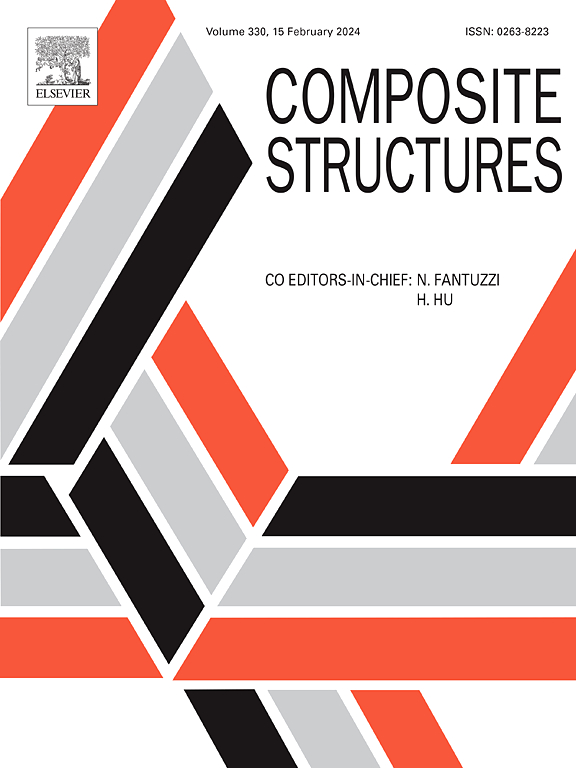Optimising structural stability of bioinspired metamaterials: genetic algorithms and neural networks in glass sponge-inspired microstructures
IF 7.1
2区 材料科学
Q1 MATERIALS SCIENCE, COMPOSITES
引用次数: 0
Abstract
This study presents a novel lattice microstructure inspired by the deep-sea glass sponge Euplectella aspergillum. A computational framework is developed to enable real-time interaction between finite element analysis and optimisation procedures based on a genetic algorithm and artificial neural networks. For the lattice microstructure under consideration, the optimisation process improves some key geometric parameters while keeping the volume fraction of its representative volume element constant to maximise the buckling load factor under uniaxial vertical compression. In particular, a wide range of geometry parameter combinations is explored through the genetic algorithm, whereas artificial neural networks are used to predict the type of instability (local, global, or combined) for each configuration. Solutions exhibiting global instability are penalised to ensure the onset of local instability in the optimised design. Finally, numerical results showed that the presented optimisation strategy improved load-bearing capacity by 34.6 % compared to previous lattice metamaterials in the literature, demonstrating its ability to strengthen the microstructure against buckling.
优化生物启发超材料的结构稳定性:玻璃海绵启发微结构中的遗传算法和神经网络
本研究提出了一种受深海玻璃海绵曲霉Euplectella aspergillum启发的新型晶格结构。开发了一个计算框架,以实现基于遗传算法和人工神经网络的有限元分析和优化程序之间的实时交互。对于所考虑的点阵微观结构,优化过程在保持其代表性体积单元体积分数恒定的同时,改善了一些关键几何参数,以最大限度地提高单轴垂直压缩下的屈曲载荷系数。特别是,通过遗传算法探索了广泛的几何参数组合,而人工神经网络用于预测每种构型的不稳定性类型(局部,全局或组合)。表现出全局不稳定性的解决方案将受到惩罚,以确保在优化设计中出现局部不稳定性。最后,数值结果表明,与文献中先前的晶格超材料相比,所提出的优化策略提高了34.6%的承载能力,证明了其增强微结构抗屈曲的能力。
本文章由计算机程序翻译,如有差异,请以英文原文为准。
求助全文
约1分钟内获得全文
求助全文
来源期刊

Composite Structures
工程技术-材料科学:复合
CiteScore
12.00
自引率
12.70%
发文量
1246
审稿时长
78 days
期刊介绍:
The past few decades have seen outstanding advances in the use of composite materials in structural applications. There can be little doubt that, within engineering circles, composites have revolutionised traditional design concepts and made possible an unparalleled range of new and exciting possibilities as viable materials for construction. Composite Structures, an International Journal, disseminates knowledge between users, manufacturers, designers and researchers involved in structures or structural components manufactured using composite materials.
The journal publishes papers which contribute to knowledge in the use of composite materials in engineering structures. Papers deal with design, research and development studies, experimental investigations, theoretical analysis and fabrication techniques relevant to the application of composites in load-bearing components for assemblies, ranging from individual components such as plates and shells to complete composite structures.
 求助内容:
求助内容: 应助结果提醒方式:
应助结果提醒方式:


